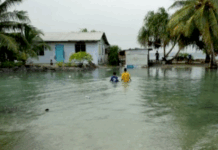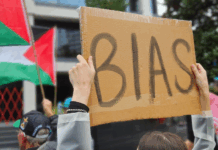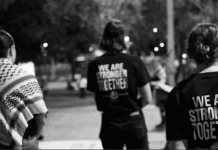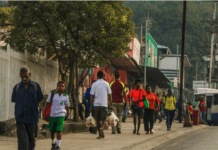Joanna, 11, talks about life in Vanuatu one year on after Cyclone Pam. Video: UNICEF
By Karen Allen
Something is seriously wrong in the Pacific.
The numbers speak for themselves; since 1970 only 11 category 5 cyclones have been recorded south of the equator; two of these happened in the last 12 months.
In 2015 the Pacific also saw three Category 4 cyclones occurring simultaneously. In a deeply concerning trend, cyclones are beginning to form out of the normal Pacific cyclone season, which spans November to April; five such cyclones formed in 2015 alone.
Last, but by no means least, Pacific countries near the equator such as Kiribati, normally protected from these storms, have in recent times reported cyclones forming in their neighbourhood.
It’s clear that the Pacific, already home to four of the world’s 10 most disaster-prone countries, has become even more vulnerable to disasters.
Sunday, 13 March 2016, marks the one-year anniversary of Cyclone Pam, which hit Kiribati, Tuvalu, the Solomon Islands and Vanuatu. Pam made landfall in Vanuatu as a devastating category 5 cyclone, affecting two-thirds of the country’s population.
Less than 12 months later, Fiji is recovering from the second-strongest storm ever to make landfall (second only to Super Typhoon Haiyan in the Philippines). Forty percent of the country’s population (an estimated 350,000 people) have been directly affected.
More severe cyclones
While scientists are unsure of the connection between climate change and the overall number of cyclones, most agree that climate change is leading to a higher number of severe tropical cyclones.
In short, the cyclones we do get, will be more destructive. In an El Niño year, warm waters caused by the cyclical weather phenomenon provide the perfect stomping grounds for stronger and longer-lasting cyclones to form and roam over vast distances.
In the case of Fiji, Cyclone Winston began as a tropical disturbance on February 7, only dissipating 26 days later, leaving a trail of destruction in its wake.
During this time it travelled past Fiji at a lower intensity, grazed Tonga, did a u-turn and came straight back at Fiji at category 5 strength, hitting the island nation with monstrous peak sustained winds of 297 kmh. Islands directly in its path never stood a chance.
In the days since this cyclone hit, we have met countless families who have said that they had no understanding of what a category 5 cyclone meant. Entire villages have simply disappeared. Concrete or wooden foundations and scattered debris are the only evidence of houses, schools and health centres.
For children and families who have lost literally everything, the impact on their lives is incalculable. UNICEF has been working around the clock to support the Fiji government to provide immediate relief to affected communities – we will continue to do so as they begin the long road to recovery.
Even a year on from Cyclone Pam in Vanuatu, children and their families still talk about the cyclone with fear in their voices. A year may have passed but the memory of that terrifying weekend is like a fresh wound.
In both countries, communities are doing their best to recover, to clean up, and to return to a sense of normality. Those in Vanuatu would no doubt tell those in Fiji that this takes time, effort, patience and strength in the face of seemingly insurmountable problems.
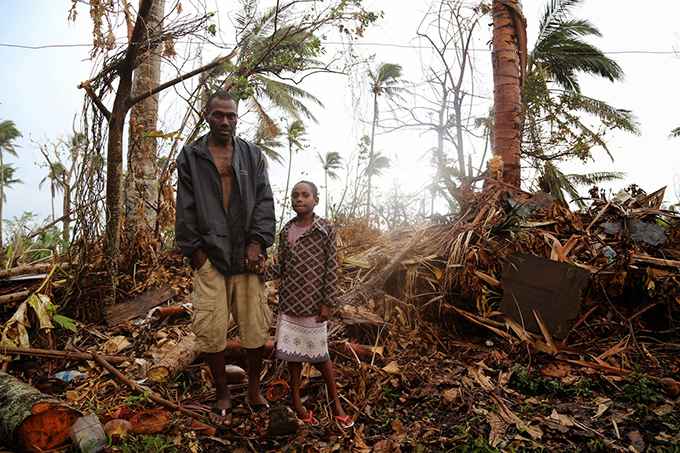
So what does this mean for Pacific nations?
It may sound like a cliché – but the expression “the new normal” is a reality here in the Pacific. Pacific countries now need to plan and prepare for all eventualities, including the prospect of a direct hit by a category 5 cyclone.
The implications are immense. We need to consider everything from the way we build homes, schools, health facilities and other critical infrastructure such as water and power supply, to the way that families prepare themselves, their crops and their livelihoods.
Buildings traditionally designated as evacuation centres may now be insufficient; community centres purpose built to serve large numbers as evacuation centres are needed.
Every child and adult in the Pacific needs to know what to do before, during and after a disaster strikes. Pacific Islanders are extremely resilient in times of difficulty but the new normal requires another level of planning, preparedness and emotional strength.
Children in the Pacific must also be a vital part of these conversations, both as those most affected by emergencies, and as those who can and will contribute to building more resilient communities in the future.
When a disaster strikes, children’s lives are changed forever. Death, injury, illness and the loss of the most basic human rights can happen in a moment; schooling comes to an end, family incomes disappear, hopes and dreams are washed away.
When it comes to climate change, with rising sea levels, prolonged droughts and intensified storms, those least responsible for this unfolding environmental disaster are shouldering the consequences of climate change.
We must listen to children and communities and actively involve them in preparing for disasters. An early warning system for cyclones is only useful if everyone understands what the warnings mean and what actions to take.
Read more about the year since Cyclone Pam struck: Fast Facts Vanuatu Cyclone Pam – One year on
At UNICEF we are investing in school-based preparedness efforts so that children will be prepared for emergencies from their youngest years; just as children learn to brush their teeth or wash their hands, they must also be aware of the simple actions they can take to prepare for emergencies and become more resilient, together.
We regularly support government-led assessments and community feedback systems using mobile phones and traditional community conversations. These can also complement existing systems used to warn children and communities about impending disasters and steps needed to protect themselves, as well as real-time monitoring and reporting.
We must learn from the past. We know, for example, that, on average, more women and girls die in disasters than men.
Seventy percent of those who died in the 2009 Tonga tsunami were women. People with disabilities, the elderly, children, those in remote communities and other groups made vulnerable by their position in society are also disproportionately and differently affected.
These groups are often the last to be reached by relief efforts, and say that they are rarely consulted or included during preparedness or recovery planning. If we are serious about assisting those most affected by disasters, then these groups need to be prioritised and supported in practical and meaningful ways.
Delaying action for children and communities on climate change not an option.
Climate change will not wait. Natural disasters will not wait. Anote Tong, the former President of Kiribati, one of the world’s most climate-affected countries, has said: “At the rate we are going it doesn’t seem likely we will be able to keep what we have for our children.” We must act to protect children now and in generations to come.
The consequences of climate change inaction are being felt every day in the Pacific. On 12 February 2016 Fiji became the first country in the world to formally ratify the new Paris Climate Agreement, undertaking to pursue renewable energy sources and cut overall emissions by 30 per cent.
Eight days later, Cyclone Winston hit.
For those who live outside the Pacific, the reality of climate change and other natural disasters can be hard to grasp. For the children of the Pacific however, this is the reality of today – and tomorrow.
The Pacific is leading the way on action to reduce the impacts of climate change. Policy changes, investment in climate change resistant crops, improved water supply and treatment methods and community-led mitigation efforts are all pieces of a much larger puzzle.
The same is true for disaster preparedness and response. Just as the Pacific looks to others for expertise and guidance, the rest of the world has much to learn from the Pacific region. We are, after all, experts by circumstance.
Whether you live in or beyond the Pacific, we all have a role to play, both in everyday actions to reduce the effects of climate change and in simple measures to better prepare ourselves and our communities for emergencies. Every step we make today to prevent and reduce the impact of climate change and natural disasters in the Pacific is an investment in a safer and more resilient future for all. We have done a lot but we need to push ourselves to do even more, our children are depending on us.
Dr Karen Allen is the UNICEF Pacific Representative. This post first appeared on UNICEF’s Connect and Vanuatu Daily Digest blogs.
Other Cyclone Pam one year later videos
Vanuatu Daily Digest image gallery – One year after Cyclone Pam


